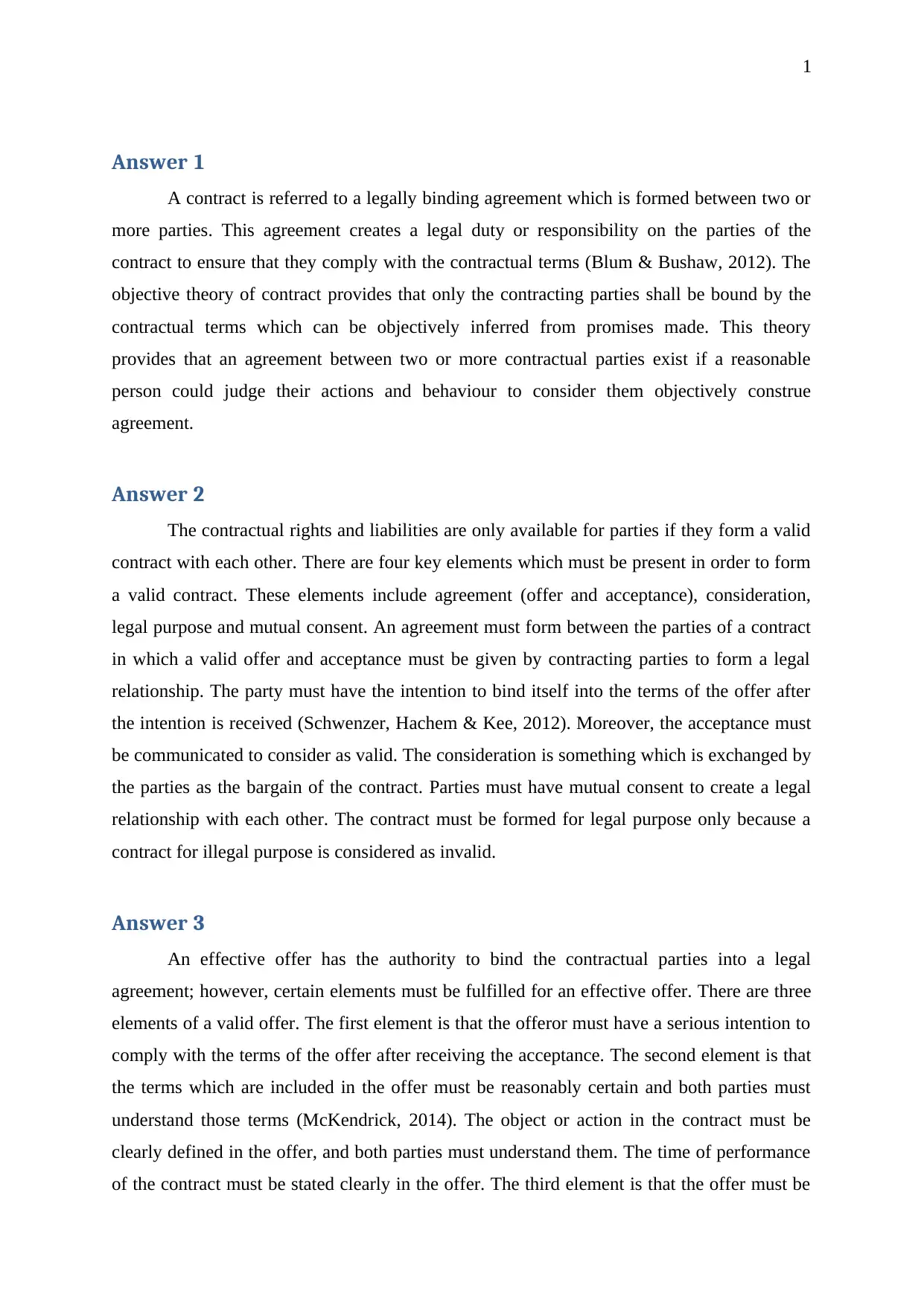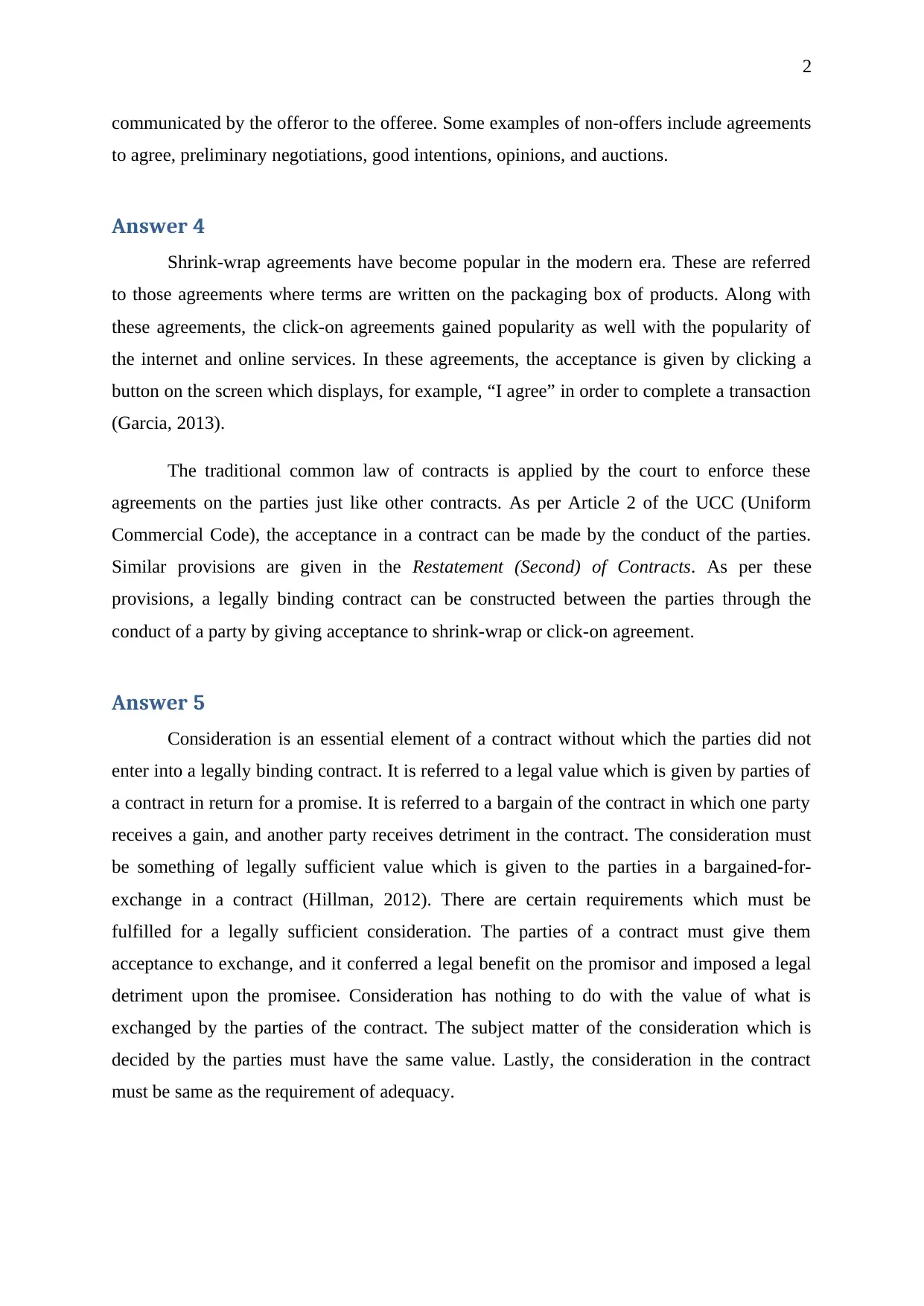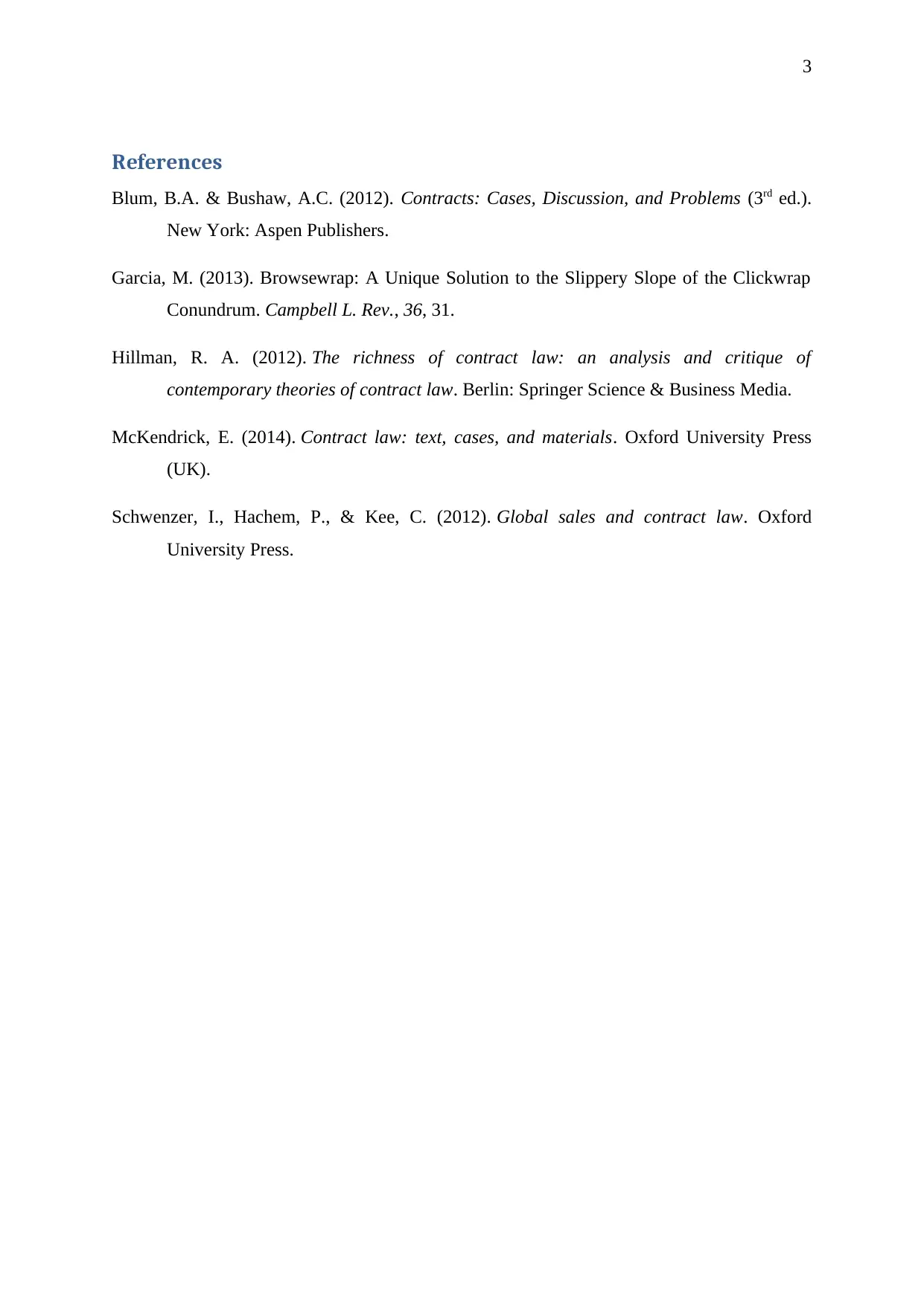Contract Law: Offer, Acceptance, and Agreements Assignment
VerifiedAdded on 2023/05/28
|4
|984
|434
Homework Assignment
AI Summary
This assignment delves into the core principles of contract law, exploring the essential elements required for contract formation. It begins by defining a contract and the objective theory of contracts, which emphasizes the outward manifestations of agreement. The assignment then examines the four key elements of a valid contract: agreement (offer and acceptance), consideration, legal purpose, and mutual consent, with detailed explanations of each. It further outlines the requirements for an effective offer, including the offeror's serious intention, reasonably certain terms, and communication to the offeree, while also providing examples of non-offers. The document also discusses the evolution of contract law in the context of shrink-wrap and click-on agreements, explaining their acceptance mechanisms and how traditional contract law principles are applied. Finally, the assignment defines consideration as a vital element, exploring its requirements for legal sufficiency, including legal value, bargained-for exchange, and benefit/detriment to the parties involved. The analysis is supported by relevant legal references.
1 out of 4










![[object Object]](/_next/static/media/star-bottom.7253800d.svg)